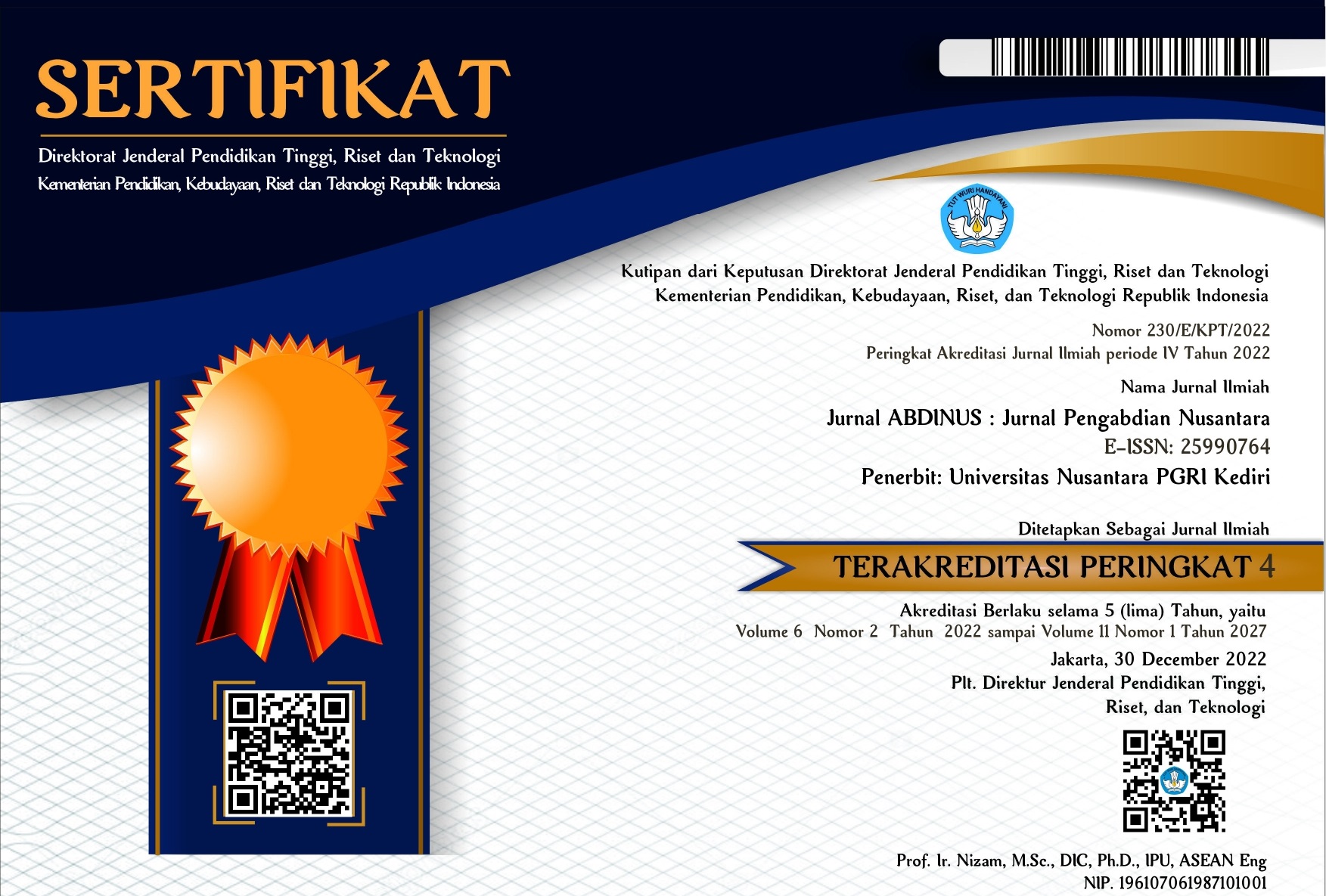Pengenalan Penerapan Ergonomi Kantor dan 5S Kepada Pegawai Administrasi Kelurahan X
DOI:
https://doi.org/10.29407/ja.v6i3.17525Keywords:
5S, Ergonomics office, Kelurahan, Webinar.Abstract
Office ergonomics talk about how to make the work area in the office suitable for people who work and support the work activities they do. Meanwhile, 5S (Seiri, Seiton, Seiso, Seiketsu, and Shitsuke) is a system that makes work activities better and of higher quality. If these two principles are applied properly to an office activity, it will certainly increase the efficiency and effectiveness of the work being carried out. The introduction of the two principles was carried out for Kelurahan X employees. Information was provided through an interactive webinar format through the Zoom Meeting platform. The purpose of this activity is to provide an understanding of the importance of Ergonomics in the office and the importance of implementing 5S to the employees of the X Village office. In the early stages of implementation, information is provided through the lecture method and collects data related to the knowledge that participants currently have using a questionnaire using Google Form, then in the next stage, participants are asked to actively participate in the application of the material that has been presented previously. In the final results of data collection, it was proven that participants had understood the benefits of applying these principles by increasing the percentage of participants' understanding obtained from the final questionnaire
Downloads
References
Diniaty, D., & H. M. (2017). Analisis 5s Pada Stasiun Kerja Press dan Stasiun Kerja Boiler Di PT. Ekadura Indonesia. Seminar Nasional Teknologi Informasi, Komunikasi dan Industri (SNTIKI) 9 (pp. p.555-560). Riau : Fakultas Sains dan Teknologi, UIN Sultan Syarif Kasim.
Healthwise. (2021, Jul1 1). Office Ergonomics. Retrieved from Penn Medicine Lancaster General Health: https://www.lancastergeneralhealth.org/healthwise-library/healthwise-article?lang=en-us&DocumentId=tr5915
Hersey, P. dan K. Blanchard. (1982). Manajemen Perilaku Organisasi: Pendayagunaan Sumber Daya Manusia. Erlangga. Jakarta.
Hirano, H. (1995). Penerapan 5S di Tempat Kerja Diterjemahkan oleh Drs Paulus A. Setiawan. Jakarta : PT. Temprint.
Meri, M., & Wijaya, H. (2016). Analisa Penerapan 5S di Warehouse Studi Kasus 5S di Warehouse Studi Kasus Semen Padang. Jurnal Teknologi , Vol. 6, No. 1p.64-73.
NIOSH. (2013, September 3). Office Environment. Retrieved from The National Institute for Occupational Safety and Health (NIOSH): https://www.cdc.gov/niosh/topics/officeenvironment/default.html
Nugraha, A. S., Desrianty, A., & Irianti, L. (2015). Usulan Perbaikan Berdasarkan Metode 5S (Seiri, Seiton, Seiso, Seiketsu, Shitsuke) Untuk Area Kerja Lantai Produksi Di PT.X. Reka Integra Jurnal Online Institut Teknologi Nasional, Vol.03 No. 4, p. 219-229.
OHCOW. (2008). Office Ergonomic Handbook Fiith Edition. Ontario: OHCOW.
Purwanggono, B., Ruminta, R., & Irawati, S. (2014). Analisis Faktor-faktor yang Memengaruhi Motivasi Karyawan dalam Menerapkan Budaya Kerja 5s (Studi Kasus pada Karyawanpt. Pln (Persero) P3jb App Semarang). Seminar Nasional Teknologi dan Informatika (SNATIF) (pp. p..57-68). Semarang: Universitas Muria Kudus.
Ridley, J. (2003). Kesehatan dan Keselamatan Kerja, . Jakarta: Edisi ketiga, Erlangga.
Tarwaka. (2010). Ergonomi Industri : Dasar-Dasar Pengetahuan Ergonomi dan Aplikasi di Tempat Kerja . Surakarta : HARAPAN PRESS.
Widjajanto, T., Rahman, A., & Perdana, S. (2019). Penerapan 5S di Kantor Pos Jakarta Pusat. Seminar Nasional Pengabdian Masyarakat LPPM UMJ (pp. p.1-7). Jakarta: Universitas Muhammadiyah.
Zaman, M. K. (2014). Hubungan Beberapa Faktor dengan Keluhan Nyeri Punggung Bawah pada Karyawan Kantor. Jurnal Kesehatan Komunitas, Vol 2 No. 4.















